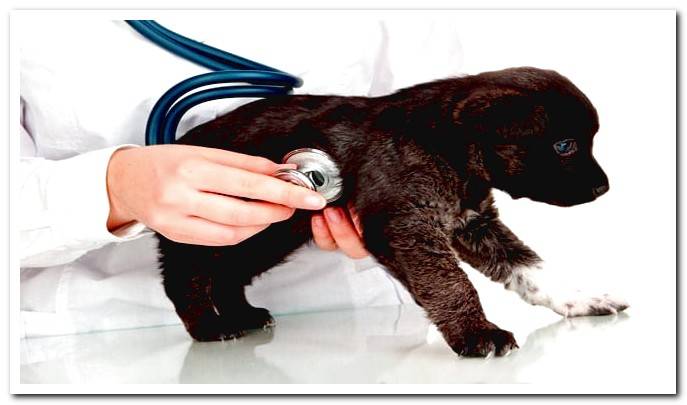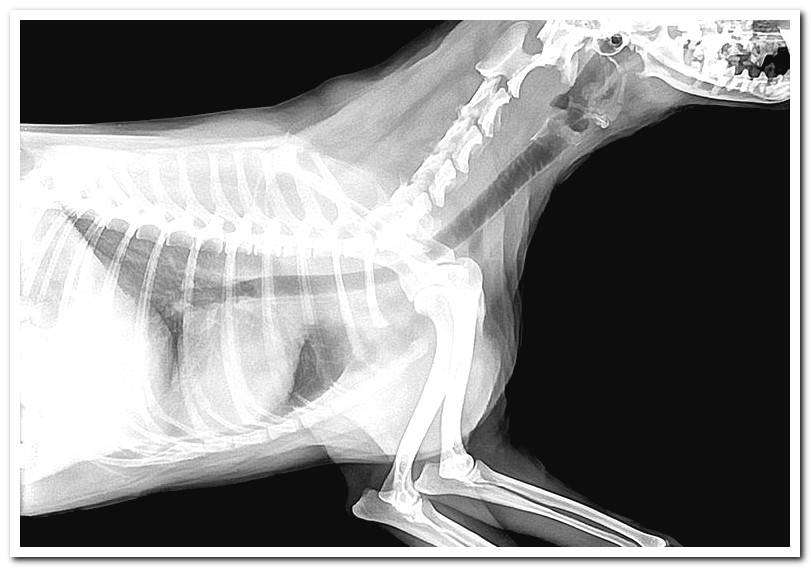
Pulmonary stenosis in dogs is one of the most frequent cardiovascular malformations among our furry companions.
However, this pathology may be present from birth but show no symptoms or do so from the dog’s first year of age.
That is why from Dogsis we want to show you how it is diagnosed, what are the main symptoms and of course, what is the best treatment.
Index of contents
- 1 How Pulmonary Stenosis Affects the Dog
- 2 Canine pulmonary stenosis symptoms
- 3 Diagnosis and treatment of pulmonary stenosis
- 4 Care needed for a dog with pulmonary stenosis
How Pulmonary Stenosis Affects the Dog
When a dog has pulmonary stenosis, it means that a part of the right ventricular outflow tract of your heart is narrower than normal. The right ventricle is where the blood flows to the lungs.
Normally, the narrowing occurs in the valve that controls this flow, although in some cases it can also be located a little lower or higher. The consequences, at the clinical level, do not vary.
Although pulmonary stenosis in dogs can affect both males and females, the former tend to have a higher incidence. The risk increases in some dog breeds more prone to pulmonary stenosis. The main ones are:
- Beagle
- Boxer
- English and french bulldog
- Miniature schnauzer
- Airedale Terrier
- Boykin Spaniel
- Chihuahua
- Cocker spaniel
- Bullmastiff
- Samoyed
- West highland terrier
Stenosis is usually an isolated malformation, although it can be associated with other birth defects such as tricuspid dysplasia in dogs, for example.
Canine pulmonary stenosis symptoms
Pulmonary stenosis in young dogs or puppies may not have any visible symptoms. Only in severe cases can an episode of unconsciousness occur.
There may also be arrhythmias, which is a heart rhythm disorder, or fluid accumulation in the abdomen. Typically, pulmonary stenosis in dogs is usually detected during a routine checkup or other causes.

Diagnosis and treatment of pulmonary stenosis
There are several tests that the specialist may want to perform before confirming the diagnosis of pulmonary stenosis. The most immediate will be to perform an auscultation to see if any kind of murmur is heard in the dog.
During this physical examination, it is also important that the veterinaryn have a complete history of his patient, in which any related symptoms are referenced.
Chest radiographs and electrocardiograms will confirm whether this malformation exists or not or other pathologies, such as pulmonary hypoplasia in dogs, which can present similar symptoms.
Angiography can also see the inside of the blood vessels and the heart, helping to identify abnormalities that exist before carrying out surgery.
And once the stenosis is confirmed, what is the next step? Well, depending on the severity of the problem, the vet will recommend the treatment that he considers most appropriate.
Mild stenosis in dogs does not usually cause too many complications and does not need treatment. In contrast, dogs with severe stenosis have a worse prognosis, unless they are operated on.
In such cases, an operation may be necessary to be able to perform a dilation or carry out different techniques that help reduce the obstruction of ventricular outflow that causes pulmonary stenosis. With this, there will be more possibilities to improve the quality of life of our furry companion.
One of the most common surgical procedures is balloon catheter pulmonary valvuloplasty. This intervention is normally recommended for dogs with moderate or severe pulmonary stenosis who have suffered from syncope or problems during exercise. Some symptoms may also be treated with medication.

Care needed for a dog with pulmonary stenosis
In addition to the indicated treatment, there are some special cares that the dog with pulmonary stenosis will need. Some tips that may be useful in this case are.
- Prevent the dog from doing intense physical exercise, as this could cause syncope or arrhythmia.
- Run away from diets with a lot of salt. Also, some dietary supplements with omega 3 fatty acids may be recommended.
- Follow all the veterinaryn’s instructions and take the dog to all the controls for a rigorous follow-up of this condition.
Keep in mind that both mild and intermediate cases, and especially severe ones, must be periodically monitored to assess how this malformation evolves.
